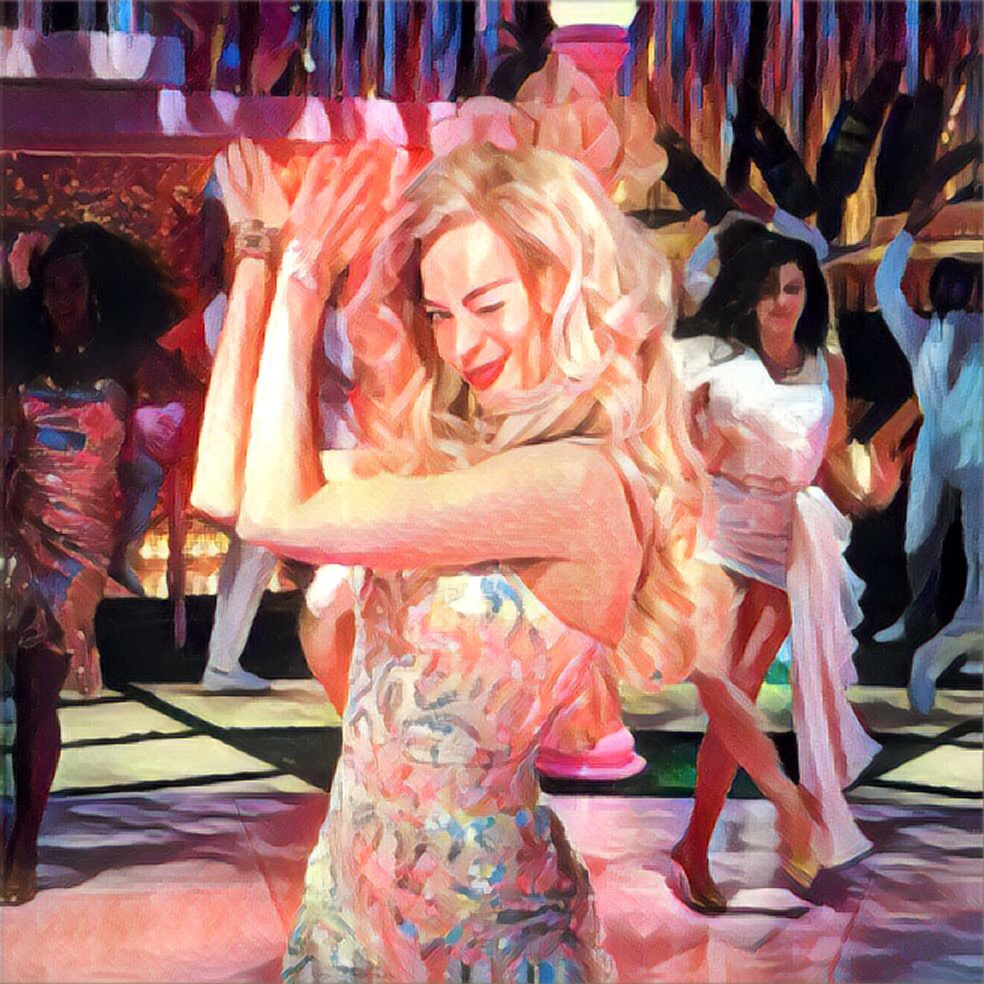Logline of Barbie: To live in Barbie Land is to be a perfect being in a perfect place. Unless you have a full-on existential crisis. Or you’re a Ken.
Script Can Be Found Here
Barbie Summary:
After Helen Mirren narrates the origin story of the beloved doll (Margot Robbie), Barbie begins in Barbieland, a pastel pink matriarchy. Living in her dreamhouse and dating (Ryan Gosling), Barbie is somewhat aware that nothing really bad happens in the matriarchy, (except for some Kens having a “beach-off”). That is, until, Barbie at a dance party, realizes her mortality, and wonders if other Barbies and Kens do the same; there’s an awkward record-scratch moment, but everyone then pretends that nothing happened. The next morning, she’s astounded to find that her feet have become flat. Seeking counsel, she tells her friends about it, who urge her to seek out Weird Barbie (Kate McKinnon), who tells Barbie that she’s opened a portal and that she has to go into the Real World to find the girl who’s playing with her so to help the girl in order to help herself.
Barbie sets out for the Real World in her car only to find that Ken has snuck in the backseat. Upon arriving in Venice Beach, the two are arrested for shoplifting outfits. After being released, Barbie continues her quest and eventually finds Sasha (Ariana Greenblatt) as well as her mother Gloria (America Ferrera). Meanwhile at Mattel headquarters, word gets out that Barbie ‘s on the loose. Ken discovers this new world he’s in where patriarchy rules (and he loves it). When Barbie finds Sasha, Sasha initially rejects Barbie. The Mattel employees find Barbie at Sasha’s junior high and bring her back to the headquarters. There, she meets Gloria and, when the employees try to put her back in her box, she escapes with Gloria and Sasha back to Barbieland. Upon arriving in Barbieland, they realize that Ken has imported patriarchy and that the roles have been reversed. There’s no longer a Barbie president, and all members of the former Supreme Court are now maids; in fact, all of the Kens are going to vote to change the constitution to a Ken-led government. With almost all of the Barbies brainwashed, Barbie is bereft. Gloria and Sasha try to escape back to LA, but Sasha convinces Gloria to turn around and help her friend. When they meet with her, Barbie confesses that she feels inadequate, and Gloria expresses a monologue wherein she talks about how difficult it is to be a woman. From there, some of the other Barbies begin to wake up, and Gloria, Barbie and Sasha have a new mission to get the rest of them awakened so to take their power back (by essentially using some of the hallmarks of patriarchy against itself).
After the Barbies execute their plan, the Kens have a gigantic beach off which turns into a gigantic dream ballet/dance-off. The Barbies reinstate the Constitution, and Ken reconciles with Barbie somewhat, but Ken still needs to figure out who he is; Barbie nevertheless says that she’s not in love with Ken. Instead, Barbie feels like she has to find herself. She talks again with Ruth Handler (Rhea Perlman), goes out into the real world to become human. The final scene has Barbie arriving at the gynecologist’s office in the Real World.

What does Barbie do well?
- Unique opening/grabber. With an undeniably strong IP, Barbie begins by framing the doll. In other words, Barbie means so many different things to so many different people, many of which are negative (i.e., a token of white supremacy, a symbol of heteronormative idealization, etc.). I normally wouldn’t support the notion of telling the audience what they’re supposed to think (that would be propaganda), but the doll has cultural baggage. Clarifying the doll’s persona sets the stage for the audience regarding the matriarchy of Barbieland and the foundation of what’s to occur.
- Rules of the world. When building a unique and fantastical world, it’s important to establish guidelines early on. The cool thing about Barbie is that it treads upon that land of play we all had as a child. We understand why there isn’t any water in her cup or why her feet are permanently arched because that’s what we remember as kids (whether we played with Barbies, G.I. Joes or whatever). When rules/guidelines of the world are established early, it becomes easier later to bend them (i.e., she notices her feet become flat).
- Contrast in light versus dark. Barbieland is light, pink, and frothy in feeling (and why would it be anything else?). So when Barbie has an existential crisis, it provides a fantastic contrast in theme/tone to its candycoated backdrop. If everything was light and fluffy, then it would just be a piece of escapist fluff. Which brings me to…
- Contrast between thesis and antithesis. To use STC parlance, Act One presents the thesis (or normal world); Act Two presents the antithesis (or upside down world). What’s so cool about Barbie is that Barbieland is the matriarchy, and L.A. is the patriarchy and yet they’re closely related in that both are sunny, suburban places (it’s not like Barbie went off to the Real World and ended up in New York). This similar-yet-different world provides a feeling that while the matriarchy is different from the patriarchy, the two may have a lot more in common than what’s seen at first glance.
- Unique B-plot. Here, the B-plot isn’t the romantic plot between Barbie and Ken (i.e., they fall in love while Barbie tries to save her world). Instead, it’s Ken falling in love with the patriarchy and trying to import it back to Barbieland. This poses an interesting contrast that sets up an…
- Action-packed act three. Barbie doesn’t take its foot off the brake when it comes time to reconcile the two worlds (from the thesis of Act One and antithesis of Act Two comes the synthesis of Act Three). After Ken imports the patriarchy – and many of the Barbies are brainwashed – how can Barbie live up to the final challenge of restoring the matriarchy? What I really appreciated was that Barbie uses the rules of the new world against itself so there’s no option for it but to self-implode with a gigantic battle/dance-off scene.
- Setting up/paying off the battle scene. Admittedly, when I hear the “beach you off” exchange among the Kens, I thought the joke was a bit inappropriate for a general audience; HOWEVER, it planted the seed for Rollerblading on Venice Beach, Ken’s profession as “beach,” and the final battle royale in Barbieland.
- Not giving an easy ending. Barbie may have saved the Barbies, but if she had ended up with Ken, the movie’s ending would’ve been way too neat. Neat endings are annoying because, in life, you often have to take the bitter with the sweet. That Barbie continues her quest to become human sets up the possibilities for a sequel but it also plants the seeds in the audience’s minds for them to continue to explore what it means to be human.
- Not condescending to the audience. Barbie may be tapping into a childlike sense of play, but it’s not afraid to explore mortality or drop references. For instance, not all of its mass audience members (especially kids) are going to get the 2001, Proust, or feminist references, but that’s okay. The movie trusts its audience to either ignore those references or look them up later. It doesn’t pander.
- Not taking itself seriously. And thank goodness. It’s a movie about one of the most famous dolls in the world, so, while it touches on deeper concepts like mortality and patriarchy, taking itself too seriously would’ve been a gigantic mistake. The film has an extraordinary madcap sense of play, and this playfulness leaps off the pages.
Open to your thoughts…

